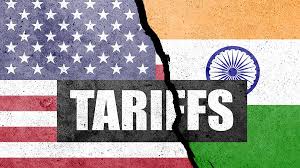
South Asia’s largest economy now finds itself under fresh U.S. scrutiny as Washington ramps up criticism of a host of Indian industries it says are unfairly off-limits to American exporters and investors. In a move that will take effect on August 1, U.S. President Donald Trump announced a 25 percent tariff on a broad array of Indian goods—escalating an already tense trade standoff. The Trump administration’s National Trade Estimate report, released in March, catalogs a series of non-tariff measures across multiple Indian sectors, from agriculture and dairy to electronics, pharmaceuticals and banking, that the United States deems “strenuous and obnoxious.” Behind the headlines lies a detailed portrait of where the world’s two largest democracies remain at loggerheads over market access and regulatory reciprocity.
Agriculture and Food Products
One of Washington’s most persistent complaints targets India’s food and agricultural regimes. New Delhi limits imports of staples such as pulses, beans and certain edible oils through quantitative caps and licensing requirements designed to shield domestic farmers. In 2023, India further expanded these curbs to encompass high-value items like almonds and canned fruits, forcing U.S. suppliers into lengthy approval processes. Dairy products, another flashpoint, are subject to religiously motivated certification rules: any imported milk or cheese must be demonstrably sourced from animals never fed meat-based feed. While intended to respect widespread dietary beliefs, these controls have effectively barred many U.S. dairy exporters from India’s fast-growing market.
India’s agricultural tariffs also exceed global norms. Average duties on farm goods hover around 39 percent, compared with roughly 5 percent in the United States. U.S. negotiators cite this disparity as undermining the spirit of bilateral trade talks, arguing that American corn, soybeans and ethanol face prohibitive barriers—despite India’s pressing need for crop imports to stabilize domestic prices. The U.S. administration has pressed New Delhi to lower or eliminate these duties, warning that failure to do so will keep India on its “priority watch list” of trading partners.
Manufacturing and Technology Sectors
India’s ambition to cultivate local manufacturing has yielded another major source of friction. Beginning in 2023, New Delhi imposed stringent licensing requirements on imports of laptops, tablets and other electronics, with the stated aim of incentivizing in-country assembly under its “Make in India” initiative. The regulations require foreign companies to secure import permits and archive detailed supply-chain data—measures U.S. firms argue are misaligned with global standards and lack predictable implementation timelines.
Beyond consumer electronics, a raft of new technical regulations now governs chemicals, plastics, medical devices, batteries, auto components and textiles. Many of these standards are mandatory and islanded from international certification norms. U.S. exporters say they face redundant testing, truncated transition periods and opaque validity windows, making it cost-prohibitive to enter the Indian market. In the automotive realm, recent proposals to tighten emissions and safety rules for imported vehicles have particularly alarmed U.S. auto-parts suppliers, who warn that overlapping approvals could delay crucial shipments by months.
The pharmaceuticals and life-sciences industries have also drawn ire. India’s drug-approval authority has instituted additional local-testing mandates for products already vetted elsewhere, lengthening market entry by up to 18 months. Biotechnology firms point to a lack of clear regulatory guidance, arguing that these measures favor domestic producers and entrench India’s position as a low-cost generics hub at the expense of cutting-edge research projects.
Services and Financial Industries
U.S. concerns extend well beyond goods to include digital services, financial markets and insurance. India’s 2021 Information Technology Act amendments impose personal criminal liability on company executives and include tight deadlines for content takedowns—steps American tech giants say have been used to target politically sensitive speech. Proposed data-privacy legislation would further empower Indian regulators to block cross-border transfers and demand unfettered access to locally stored personal data, imperiling the operations of U.S. cloud-computing and social-media platforms.
In finance, foreign investment in Indian banks remains capped at 20 percent, even as state-run lenders control about 60 percent of the market. U.S. banks report opaque branch-expansion rules and lengthy approval processes for mergers or new services. Similarly, state-owned general and life insurers enjoy preferential government guarantees, while private foreign insurers contend with higher capital requirements and restrictions on product offerings. U.S. representatives argue these limits not only stifle competition but also violate commitments made under the 1994 General Agreement on Trade in Services.
On customs procedures, American exporters cite inconsistent valuation methodologies that have triggered retrospective duties and sudden investigations—particularly for high-tech imports like semiconductors and network hardware. They point to several cases in which declared transaction values were rejected without transparent benchmarks, creating uncertainty that can stall multimillion-dollar shipments for weeks.
Renewables, Gems and Textiles Added to the Grill
Beyond the headline industries, Washington’s critiques have recently broadened to include clean-energy technologies and traditional manufacturing clusters. U.S. solar-panel makers have complained about India’s local-content mandates under the National Solar Mission, which require a significant share of modules and cells to be domestically produced—rules that WTO tribunals have previously found discriminatory. At the same time, gem and jewelry firms, notably in Surat’s diamond polishing hubs, were caught off guard in July by the abrupt tariff announcement, fearing lost contracts and wider supply-chain disruptions.
India’s vibrant textile sector, a major employer across states like Tamil Nadu and Maharashtra, now braces for retaliatory duties after capitalizing for years on U.S. buyers’ shift away from Chinese goods. Apparel exporters warn that a 25 percent penalty on stitched garments, yarns and fabrics could price them out of markets that helped drive India’s exports to a record \$45 billion in 2024.
As bilateral trade negotiations resume behind closed doors, policy-makers in New Delhi face the delicate task of balancing economic sovereignty with the imperatives of deeper market access. For U.S. officials, the litany of non-tariff barriers—spanning farming, finance, high-tech and beyond—underscores a broader critique that India’s regulatory framework remains tilted toward protectionism. With global supply chains in flux and geopolitical rivalries intensifying, both capitals have signaled a willingness to compromise, yet neither appears ready for a deal that fails to address the core industry grievances on their respective wish lists.
The coming weeks will test whether nuanced regulatory adjustments in agriculture, manufacturing, services and finance can pave the way for a more sustainable partnership—or whether mutual allegations of market distortion will keep the world’s two largest democracies on a collision course.
(Source:www.reuters.com)
Agriculture and Food Products
One of Washington’s most persistent complaints targets India’s food and agricultural regimes. New Delhi limits imports of staples such as pulses, beans and certain edible oils through quantitative caps and licensing requirements designed to shield domestic farmers. In 2023, India further expanded these curbs to encompass high-value items like almonds and canned fruits, forcing U.S. suppliers into lengthy approval processes. Dairy products, another flashpoint, are subject to religiously motivated certification rules: any imported milk or cheese must be demonstrably sourced from animals never fed meat-based feed. While intended to respect widespread dietary beliefs, these controls have effectively barred many U.S. dairy exporters from India’s fast-growing market.
India’s agricultural tariffs also exceed global norms. Average duties on farm goods hover around 39 percent, compared with roughly 5 percent in the United States. U.S. negotiators cite this disparity as undermining the spirit of bilateral trade talks, arguing that American corn, soybeans and ethanol face prohibitive barriers—despite India’s pressing need for crop imports to stabilize domestic prices. The U.S. administration has pressed New Delhi to lower or eliminate these duties, warning that failure to do so will keep India on its “priority watch list” of trading partners.
Manufacturing and Technology Sectors
India’s ambition to cultivate local manufacturing has yielded another major source of friction. Beginning in 2023, New Delhi imposed stringent licensing requirements on imports of laptops, tablets and other electronics, with the stated aim of incentivizing in-country assembly under its “Make in India” initiative. The regulations require foreign companies to secure import permits and archive detailed supply-chain data—measures U.S. firms argue are misaligned with global standards and lack predictable implementation timelines.
Beyond consumer electronics, a raft of new technical regulations now governs chemicals, plastics, medical devices, batteries, auto components and textiles. Many of these standards are mandatory and islanded from international certification norms. U.S. exporters say they face redundant testing, truncated transition periods and opaque validity windows, making it cost-prohibitive to enter the Indian market. In the automotive realm, recent proposals to tighten emissions and safety rules for imported vehicles have particularly alarmed U.S. auto-parts suppliers, who warn that overlapping approvals could delay crucial shipments by months.
The pharmaceuticals and life-sciences industries have also drawn ire. India’s drug-approval authority has instituted additional local-testing mandates for products already vetted elsewhere, lengthening market entry by up to 18 months. Biotechnology firms point to a lack of clear regulatory guidance, arguing that these measures favor domestic producers and entrench India’s position as a low-cost generics hub at the expense of cutting-edge research projects.
Services and Financial Industries
U.S. concerns extend well beyond goods to include digital services, financial markets and insurance. India’s 2021 Information Technology Act amendments impose personal criminal liability on company executives and include tight deadlines for content takedowns—steps American tech giants say have been used to target politically sensitive speech. Proposed data-privacy legislation would further empower Indian regulators to block cross-border transfers and demand unfettered access to locally stored personal data, imperiling the operations of U.S. cloud-computing and social-media platforms.
In finance, foreign investment in Indian banks remains capped at 20 percent, even as state-run lenders control about 60 percent of the market. U.S. banks report opaque branch-expansion rules and lengthy approval processes for mergers or new services. Similarly, state-owned general and life insurers enjoy preferential government guarantees, while private foreign insurers contend with higher capital requirements and restrictions on product offerings. U.S. representatives argue these limits not only stifle competition but also violate commitments made under the 1994 General Agreement on Trade in Services.
On customs procedures, American exporters cite inconsistent valuation methodologies that have triggered retrospective duties and sudden investigations—particularly for high-tech imports like semiconductors and network hardware. They point to several cases in which declared transaction values were rejected without transparent benchmarks, creating uncertainty that can stall multimillion-dollar shipments for weeks.
Renewables, Gems and Textiles Added to the Grill
Beyond the headline industries, Washington’s critiques have recently broadened to include clean-energy technologies and traditional manufacturing clusters. U.S. solar-panel makers have complained about India’s local-content mandates under the National Solar Mission, which require a significant share of modules and cells to be domestically produced—rules that WTO tribunals have previously found discriminatory. At the same time, gem and jewelry firms, notably in Surat’s diamond polishing hubs, were caught off guard in July by the abrupt tariff announcement, fearing lost contracts and wider supply-chain disruptions.
India’s vibrant textile sector, a major employer across states like Tamil Nadu and Maharashtra, now braces for retaliatory duties after capitalizing for years on U.S. buyers’ shift away from Chinese goods. Apparel exporters warn that a 25 percent penalty on stitched garments, yarns and fabrics could price them out of markets that helped drive India’s exports to a record \$45 billion in 2024.
As bilateral trade negotiations resume behind closed doors, policy-makers in New Delhi face the delicate task of balancing economic sovereignty with the imperatives of deeper market access. For U.S. officials, the litany of non-tariff barriers—spanning farming, finance, high-tech and beyond—underscores a broader critique that India’s regulatory framework remains tilted toward protectionism. With global supply chains in flux and geopolitical rivalries intensifying, both capitals have signaled a willingness to compromise, yet neither appears ready for a deal that fails to address the core industry grievances on their respective wish lists.
The coming weeks will test whether nuanced regulatory adjustments in agriculture, manufacturing, services and finance can pave the way for a more sustainable partnership—or whether mutual allegations of market distortion will keep the world’s two largest democracies on a collision course.
(Source:www.reuters.com)





